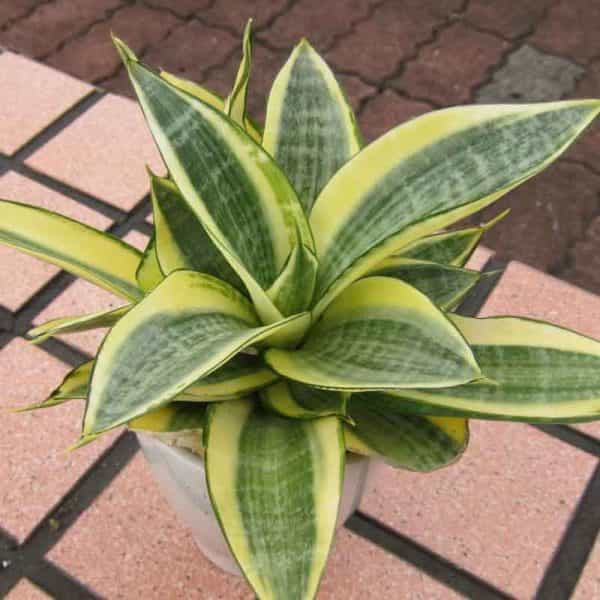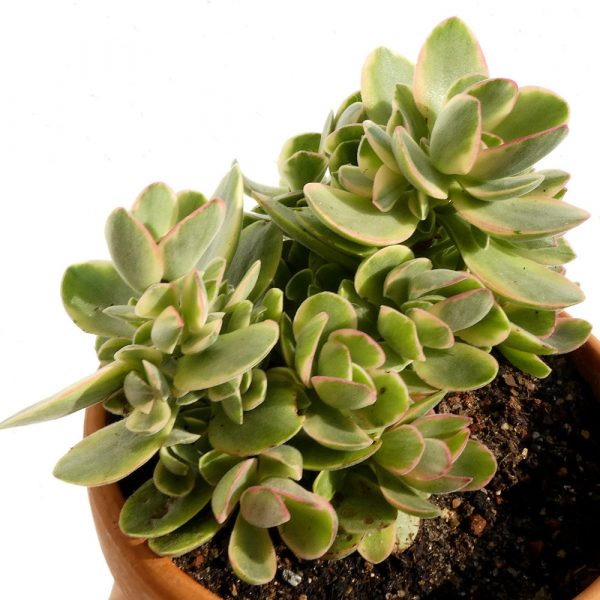How-To Guide To Growing And Maintaining Aglaonema

Aglaonema is considered one of the easiest house plants to grow, so you gardeners out there with black thumbs, this one is for you! Thus plant is rather versatile, as it can be grown in pretty much the darkest, driest conditions and it will still flourish beautifully.
It can go weeks without watering and be limited in light exposure and it will continue to thrive. So, if you’re a succulent or plant lover who has a tendency to forget they own plants, worrying about this one won’t be an issue.
It’s described as a durable houseplant because of its ability to withstand a fair amount of abuse and neglect making it the perfect plant for people who have a dark history of killing their plants. Intentionally or not.
It has been dubbed the ‘easiest houseplant’ by Southern Living. So, good luck killing this plant.
Brief History
The aglaonema plant has been grown in countries in Asia for centuries as a luck-bringing plant. They were finally introduced to the wild west in 1885 when they were brought directly to the Royal Botanic Gardens.
Since then they have been cultivated and bred into a wide variety of types and are a joy to grow in your household.
What Is The Lifespan Of Aglaonema?
Considering that it is recommended to feed it once or twice a year, the probability that this plant can last a long time is high.
You may not even have to fertilize the plant at all in its lifetime, but do make sure not to starve it, it’s usually recommended to water it during spring and summer using a diluted liquid fertilizer to feed the plant.
Typically after two to three years, the plant is stretched and the color of the leaves overall becomes less characterized and starts exhibiting different colors, especially as irregular patches or streaks.
The growth rate for this plant is five-six leaves per year on average, however, this can differ. After those two or three years, your plant could last longer but keep an eye on those leaves to find out if it’s worth keeping alive or not. A rotting plant is a dead plant.
Does Aglaonema Need Big Pots?
Typically, the Aglaonema plant can grow up to 2 feet tall and wide, growing 8-inch long leaves with a 4-inch wind span. These types of plants tend to grow at a slower rate so it will take a few years for them to reach their full growth potential under any climate conditions.
If the pot size is an issue for you because the pot you have appears to be too small, trimming the plant regularly can limit its growth so you decide how large it grows.
However, repot the plant every two years to encourage the growth of the Aglaonema to get the best out of the plant. Try to select a pot that is at least 250mm wide or larger depending on its current size and place the plant in an area that is well lit but away from direct sunlight if possible.
Why Do Aglaonema Leaves Turn Yellow?
There can be many reasons why the leaves on your Aglaonema plant are turning yellow, so let’s dive into the possibilities and what you can do to change this. One of the most common causes of yellow leaves in this plant is overwatering, or improper soil, moisture.
Try to only water your Aglaonema plant when the top 2 or 3 inches of soil are dry, it should be able to stay damp, but not wet. As usual, during winter, you can allow the plant to dry up a bit as it won’t need watering anywhere near as often.
The humidity level could be affecting your Aglaonema because low humidity and dry soil cause the foliage to brown on their edges which then can turn yellow later on. Try misting the leaves to increase the humidity!
Improper light could be the culprit also as the plant thrives in low indirect sunlight. When it’s exposed to direct sunlight for too long the plant will burn and the leaves will dry out, causing them to turn yellow.
Pests could also be the Achilles’ heel of the plant world. In this case, if the plant leaves are turning yellow, it could be because the plant is weakened or stressed and then more susceptible to insect infections, which can drain the moisture out of the plant fast.
Is Aglaonema A Lucky Plant?
Yes, the Aglaonema plant has been cultivated in China and other Asian countries for centuries and is dubbed a lucky plant. The plant is considered s bringer of fortune because of its striking appearance, and ease of growth.
It was said to bring good well-being and financial success to anyone who grew the plants and this tradition is still alive today.
Even if you’re not the most curious person who likes to adopt lucky traditions into their life, its cant harm you to keep the plant’s luck in mind and enjoy any good fortune that may come your way from keeping an Aglaonema plant in your home.
Good fortune is always something we welcome into our lives no matter where it ca\me from, so if this plant is truly lucky, embrace it! So if a new fount interest in this Chinese traditional house plant is a sneaky message to shape your future, why not welcome it? There’s nothing to lose.
The plant originally gained a wider audience in the 1960s and 70s when in-door plant keeping took off like a storm and became the rage.
Ironically new hybrids were developed from selections of Aglaonema plants to produce an exciting array of cultivated plants that fit well for commercial interior-scape cultivation. So, many of these commercial growers struck fortune as sales of this new hybrid of the plant.
How Do You Make Aglaonema Grow Faster?
One way to help your Aglaonema plant grow faster or grow fuller is by pruning it to make it bushier. You can do this by giving it moderate amounts of indirect sunlight and keeping it strictly at a temperature between 70 and 85 degrees Fahrenheit.
Even though this plant does not require much sunlight, you want to make sure it can stay warm throughout the winter, light is less important than warmth when it comes to these plants. Humidity is vital for your Aglaonema plant’s overall happiness and growth.
So, even though there isn’t a distinct way to grow them faster, keeping them happy can encourage better growth which may reduce some of the growth time that it usually takes to grow the plant.
A nitrogen-rich fertilizer will be beneficial as well as repotting every 2 or 3 years. And when it does come down to repotting season, make sure you choose a pot 3 or 4 inches bigger than your last one to encourage better growth.
Does Aglaonema Bear Flowers?
Almost all Aglaonema plants flower during the summer, so yes they can bear flowers extremely well. They don’t usually bloom during the spring or fall months, however. When they bear flowers, it shows that the plant is mature and healthy.
The flower itself emerges from the stalk and takes roughly between 8 and 13 days to fully open up. Surprisingly it has no direct smell to it, however, it is beautiful to look at!
How Do You Save An Overwatered Aglaonema?
Taking care of your Aglaonema plant depends on the environment you place it in, if your home gets a lot of sunlight, you may want to shade it more and if your home gets no sunlight, it may need more watering to compromise.
Depending on your home environment, pot size, and type of soil mix, you’ll want to adjust your watering times and methods accordingly.
One thing to remember, don’t overwater it. And if you do, you’ll want to either let it drain and not water it again for twice as long to make up for the overwatering.
Or, you can try tipping some of that water out before it has time to dampen into the soil. Plats like this also require less watering in the winter months as they prefer to rest at this time of year so just keep that in mind.
Frequently Asked Questions
Why Are The Leaves On My Aglaonema Plant Pale?
This type of plant can bloom very heavily despite only blooming in the summer, therefore this process can take a lot of energy out of the plant, the blooming pulls nutrients straight from the plant itself.
This results in the plant producing smaller leaves that are sometimes distorted and paler in appearance.
Is Aglaonema A Chinese Evergreen?
These plants originate from Asian countries and specifically China. Many traditions are surrounding this plant that is said to bring good fortune and luck when you house them.
Some of these beliefs are still in practice today and many people believe the plant brings them good luck and wellbeing.
Is Aglaonema A Good Houseplant?
Yes, Aglaonema makes for a good houseplant. Because it’s a plant that relies on being left alone, it’s ideal for plant lovers who either don’t have time to take care of it or just don’t like taking care of plants.
They don’t require frequent watering or direct sunlight exposure, all they require is watering every now and then, and exposure to dim lighting.






Reviews
There are no reviews yet.